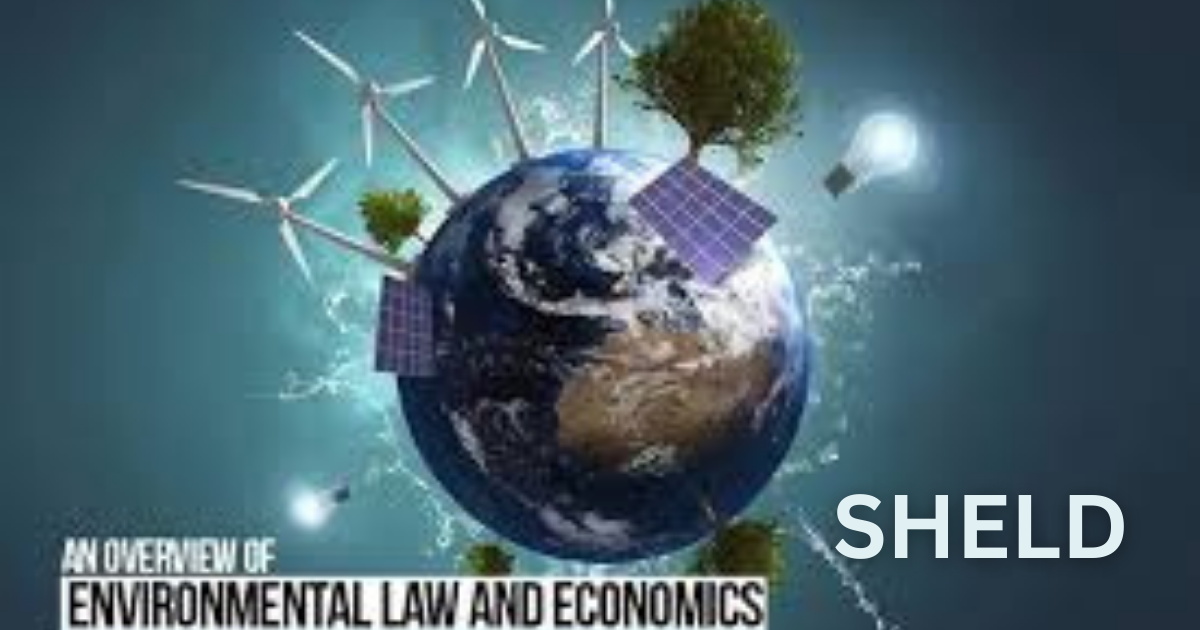Introduction
Environmental law governs how societies interact with natural resources, pollution, and ecological systems. Traditionally viewed as a domain of legal doctrine and policy, environmental law increasingly benefits from insights provided by economics. An economic perspective helps policymakers design regulations that balance ecological preservation with economic growth, while minimizing inefficiencies and unintended consequences. This article explores environmental law through the lens of economics, examining theoretical foundations, regulatory instruments, case studies, challenges, and future directions.
Theoretical Foundations
- Externalities and Market Failure
- Environmental harm often results from negative externalities, where polluters impose costs on society without bearing them.
- Without intervention, markets overproduce pollution-intensive goods and underinvest in conservation.
- Public Goods and the Environment
- Clean air, biodiversity, and stable climates are public goods—non-rival and non-excludable.
- Markets struggle to provide these efficiently, necessitating legal and policy frameworks.
- Pigouvian Taxes
- Arthur Pigou argued that imposing taxes equivalent to the social cost of pollution can internalize externalities.
- Forms the economic justification for carbon taxes and pollution charges.
- Coase Theorem
- If property rights are well-defined and transaction costs are low, private bargaining can achieve efficient environmental outcomes.
- In practice, high transaction costs often require state intervention.
- Cost-Benefit Analysis in Environmental Law
- A key economic tool used to evaluate environmental regulations.
- Ensures that the benefits of environmental protection outweigh compliance costs.
Regulatory Instruments and Economic Insights
- Command-and-Control Regulation
- Sets strict limits or bans on harmful activities.
- Provides certainty but may be inefficient if compliance costs vary across firms.
- Market-Based Instruments
- Carbon Taxes: Align private incentives with social costs of emissions.
- Cap-and-Trade Systems: Allow firms to buy and sell emission permits, achieving reductions at lowest aggregate cost.
- Tradable Permits for Fisheries or Water Rights: Allocate resource use efficiently.
- Subsidies and Incentives
- Governments may subsidize renewable energy, conservation, or clean technology adoption.
- Risk of distortion if subsidies are poorly designed.
- Liability Rules
- Polluters may be held legally responsible for damages.
- Encourages precaution and innovation in pollution control.
- Voluntary Agreements and Disclosure
- Firms may adopt environmental standards due to reputational concerns.
- Disclosure requirements (e.g., emissions reporting) enhance market discipline.
Case Studies
- U.S. Clean Air Act
- Introduced cap-and-trade for sulfur dioxide emissions to combat acid rain.
- Widely regarded as a cost-effective regulatory success.
- European Union Emissions Trading System (EU ETS)
- Largest carbon market in the world.
- Demonstrates both the potential and challenges of implementing large-scale market-based systems.
- Costa Rica’s Payments for Ecosystem Services Program
- Compensates landowners for conserving forests, internalizing environmental benefits.
- A model for integrating economics into conservation law.
- China’s Environmental Enforcement
- Recent strengthening of environmental laws highlights tension between growth and regulation.
- Demonstrates the importance of enforcement mechanisms in achieving efficiency.
Economic Implications of Environmental Law
- Innovation and Green Technology
- Well-designed environmental laws stimulate innovation in clean energy and pollution reduction technologies.
- Competitiveness and Trade
- Stricter regulations may raise production costs, but also create new industries.
- Border carbon adjustments are proposed to prevent “carbon leakage.”
- Distributional Effects
- Environmental policies can disproportionately affect low-income households if costs are passed through in prices.
- Policies need to incorporate equity considerations.
- Dynamic Efficiency
- Long-term benefits of regulation (e.g., improved health, ecosystem services) often outweigh short-term costs.
Challenges
- Measuring Environmental Costs and Benefits
- Valuing non-market goods like biodiversity or cultural heritage is difficult.
- Risk of underestimating long-term ecological damages.
- Global Commons and Collective Action
- Climate change and ocean pollution require international cooperation.
- National legal systems struggle with global coordination.
- Regulatory Capture
- Industry groups may influence environmental laws, undermining effectiveness.
- Uncertainty and Irreversibility
- Many environmental harms are irreversible, making precautionary regulation necessary despite uncertain costs.
Policy Considerations
- Balancing Growth and Sustainability
- Policies should aim for sustainable development, ensuring that economic growth does not compromise environmental integrity.
- Incorporating Equity
- Designing environmental taxes and subsidies to avoid regressive effects.
- Adaptive Regulation
- Laws should evolve as scientific understanding and economic conditions change.
- International Coordination
- Strengthening treaties like the Paris Agreement is vital for addressing global challenges.
- Public Participation
- Involving communities in decision-making increases legitimacy and compliance.
Future Directions
- Green Finance and ESG (Environmental, Social, Governance) Investing
- Financial markets increasingly reward firms with strong environmental compliance.
- Digital Monitoring and Enforcement
- Satellite data, sensors, and AI can improve compliance and reduce monitoring costs.
- Climate Litigation
- Growing trend of holding governments and corporations accountable through courts.
- Circular Economy Frameworks
- Laws promoting recycling, reuse, and sustainable production to reduce waste.
- Integration with Human Rights Law
- Recognition of the right to a healthy environment strengthens legal frameworks.
Conclusion
Viewing environmental law through the lens of economics reveals both the necessity of regulation and the potential for efficiency-enhancing policies. By addressing externalities, aligning incentives, and fostering innovation, economic principles guide the design of environmental laws that balance growth with sustainability. While challenges such as measurement difficulties, global coordination, and inequality persist, future directions in technology, finance, and international law hold promise for more effective and equitable solutions. Ultimately, the integration of economics into environmental law provides a roadmap for safeguarding the planet while supporting human prosperity.
Word Count: ~1608




